Welcome to issue 4! As always, I’ll be trying new things. October was supposed to be my tinker-free month so I’m doing a few layout updates today.
More and more this seems like this is becoming a way to share what I’ve been reading, listening to, and watching. With drawings related to those things. I’ll be more explicit about that format here. But first, a few inches that will likely affect issues to come.
What I’m up to
I exchanged my 9.7″ iPad Pro for the larger one. This was a little impulsive, done a couple days after seeing someone with the big one at a conference then another person with the big one at Smorgasburg.
Of course, the main reason to upgrade was for drawing. The 9.7″ sometimes felt cramped when any UI elements were on screen. Now that I’ve experienced the 13.1″, it’s like I didn’t know just how cramped I felt. There’s so much more room to breathe.


As for other things, the writing experience is better. The 13.1″ Smart Keyboard is way better to type on than 9.7″ keyboards—I tired both the Smart Keyboard and Logitech’s Create.
The larger device is great for creating content but consuming content is worse. Sometimes you get a mobile site that doesn’t scale to this large a screen. Depending on type settings, Kindle books look like science journal PDFs or books teaching kids how to read. (Though landscape with two pages displayed is actually pretty nice.)
What I’m reading: Create, create, create
So what have I been reading in this giant Kindle view?
Keys to Drawing by Bert Dodson
Continuing reading this and working through the exercises. Last week was focused on measuring properly and I’m still practicing that a lot. This week there’s been more on fundamental shapes and shadows.
Show and Tell by Dan Roam
Roam writes a lot about using drawing in a business setting. This is about storytelling to put presentations together. I’ll probably check out some of his other books about sketching ideas.
Create or Hate by Dan Norris
A nice, easy read providing the right kick-in-the butt to go make something. Hate is the force that keeps people from creating things. It’s similar to The Resistance from Steven Pressfield’s books.
Shut Your Monkey by Danny Gregory
The Resistance and Hate are aggressive forces actively working to stop you from creating. Gregory talks about overcoming The Monkey. It’s a more lighthearted enemy but it stops you from creating all the same.
Word of the day: anthropomorphism. That’s also the title of my future post talking about the various enemies of creativity.
What I’m watching: Free solo
A friend visited New York a couple weeks ago with his girlfriend. Talking to them about climbing (they climb, I don’t) led to me watching some climbing videos. The one video to watch is his appearance on 60 Minutes: The Ascent of Alex Honnold
I checked my main reference source, the Joe Rogan Experience, and found an Alex Honnold interview.
Rogan asks him about being scared of what might happen if he falls from so high up. After about 90 feet, the result of falling would be the same. You’ll explode like a water balloon at 500 feet the same way you would at 1000 feet. What you don’t want is to fall below 90 feet, break all your bones and bleed out.
Cool.
As I reattached my carabiner to my keys and shifted my learning aspirations from free-soloing back to drawing, I thought about how this lesson could be abstracted. If the consequences are the same at a certain threshold, go as big as possible?
Maybe climbing thousand foot rock faces shouldn’t be compared to drawing.
Speaking of faces. Actually, hold that thought. Let’s talk bodies.
I’m still working through Keys to Drawing and I recently read a section about the foundational shapes:
Even the human figure can be seen as a series of cylinders.
I tried applying this by drawing Alex Honnold
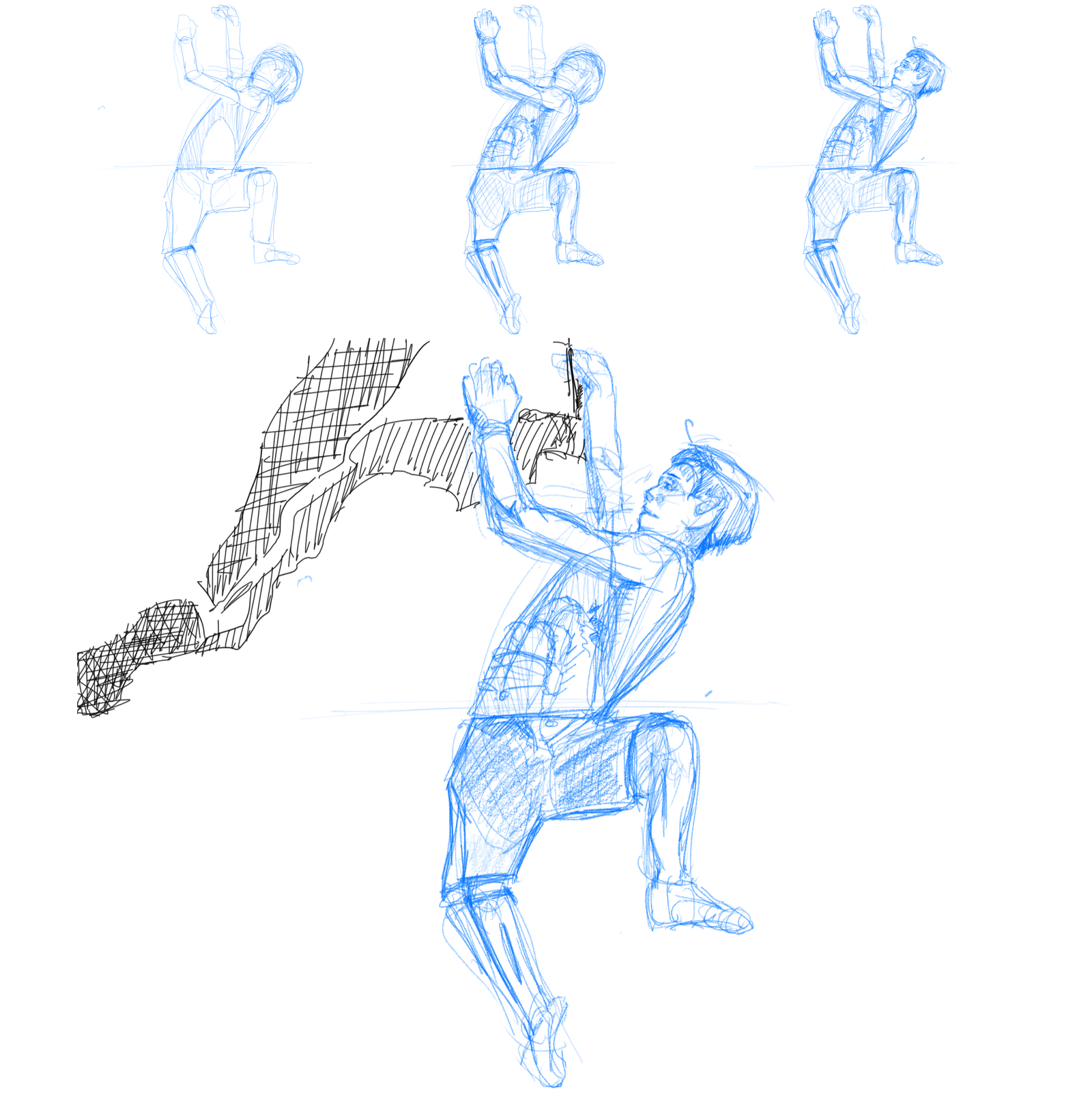
And again in a different position.
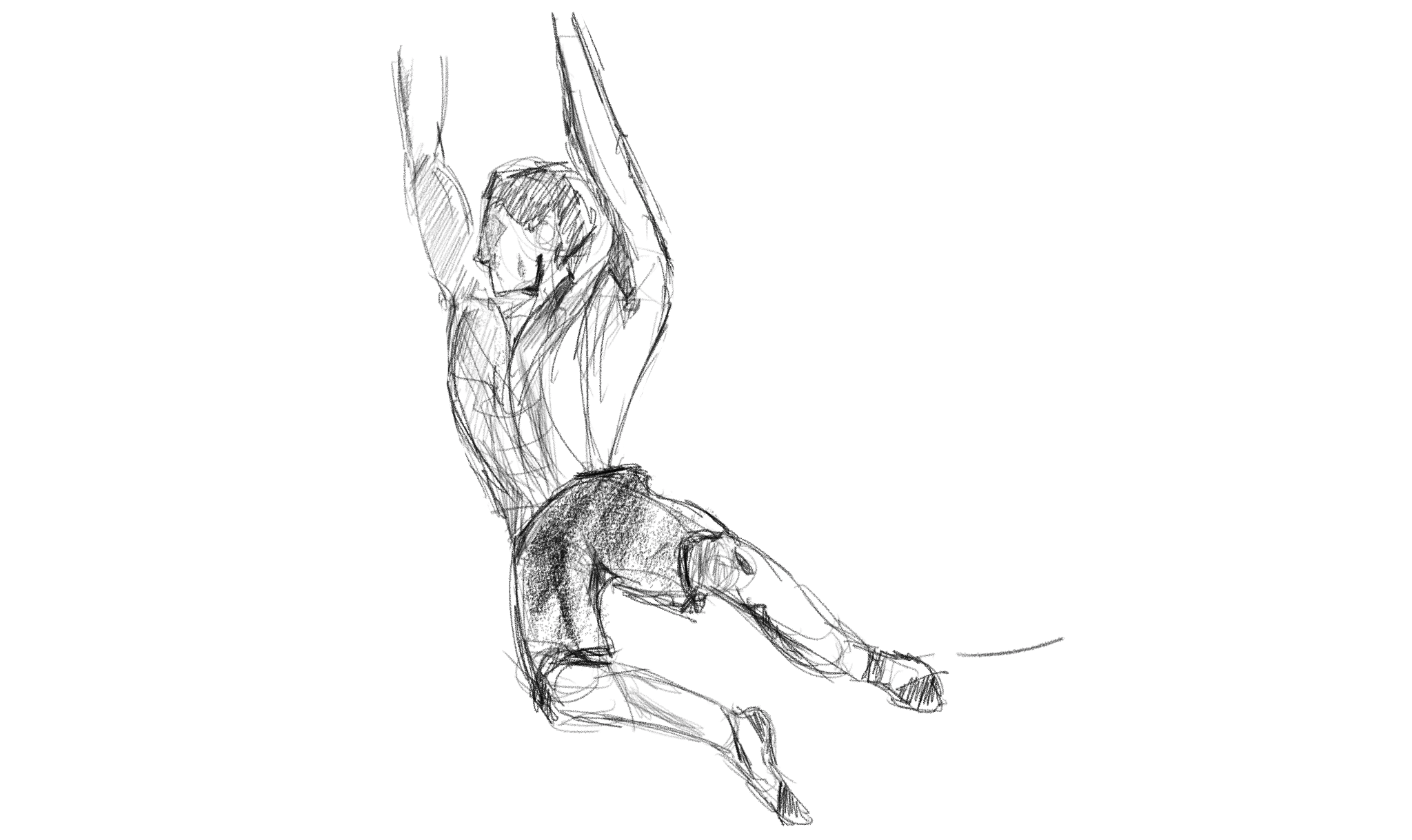
Thinking this way was really helpful. It’s a lot easier to visualize two cylinders connecting than it is to think about arm anatomy.
Speaking of faces! I’ve continued with trying to draw faces. I tried drawing without reference photos.
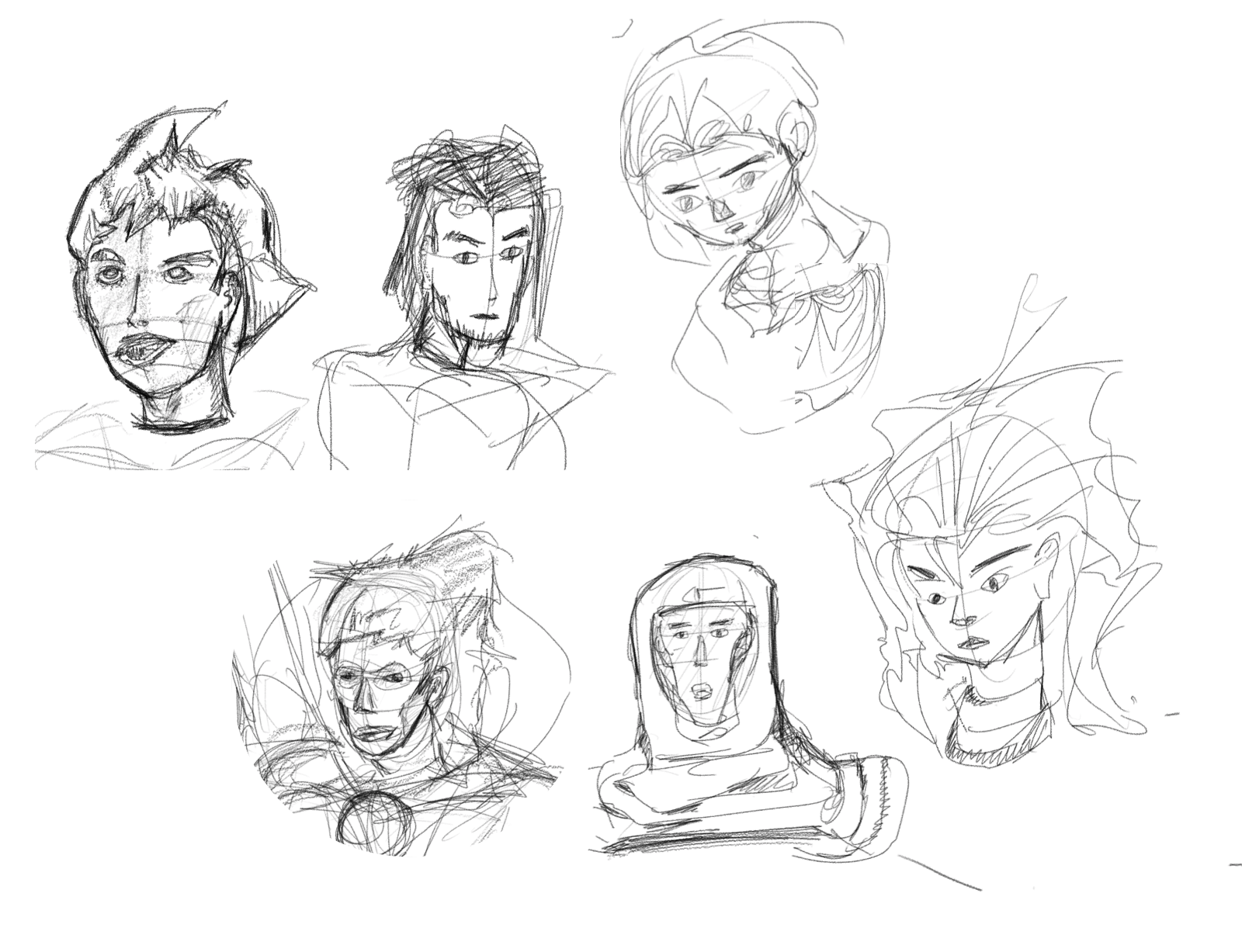
I’m getting better at drawing eye shapes when the face isn’t facing directly forward. At least relative to my life to this point where I thought it was impossible. To draw a face, first you draw an egg.
I’m always amazed that programming allows you to create so much by writing and combining text files. You can build a world.
Now I’m appreciating something similar with drawing. These faces aren’t great, they don’t have stories, and they aren’t particulary interesting. But they came from my head. Now they exist in this virtual sketchbook.
What I’m listening to: DHH on the Tim Ferriss Show
SNFPTAM: a sketched edition!
I’ll continue thinking of pronounceable abbreviations for show notes for podcasts that aren’t mine. I start probably every fifth sentence in conversation with “I heard this on a podcast…” I may as well write notes for them. It gives me something to write about.
We can’t multitask like we’d hope. It’s usually just rapid context switching. If there’s something I can do that looks like the idea of multitasking, it’s listening to a podcast while drawing something about what I’m hearing.
Speaking of faces! Here’s David Heinemeier Hansson, who you might know better as DHH.

He’s a co-founder of Basecamp and a proponent of work-life balance. Some things in work are critical, but so much can wait.
DHH recently appeared on the Tim Ferriss Show. They went for three and a half hours—long even for a Tim Ferriss podcast. As you can imagine, they covered a lot of topics. Here’s a drawing of Tim Ferriss from issue 1. (And a guest appearance from a Seattle legend.)
In the context of startup founders, they discuss goals sometimes being out of line with the journey to get there. Out of line is an understatement. Startup founders compress (aka nearly exhaust themselves to death) for 7-10 years.
All to possibly hit the jackpot and a vision of relaxation and rest and escaping the rat race. Then they go sit on a beach for a couple weeks and it’s not for them. So they start another company and, since luck is involved, they aren’t as successful. It’s not the best formula for happiness.
Well, it’s not quite happiness
In talking about happiness, DHH says tranquility might be key. He wrote about this in The Day I Became a Millionaire’:
If anything, I began to appreciate even more intently that flow and tranquility were the true sources of happiness for me all along. It was like I had pulled back the curtain on that millionaire’s dream and found, to my surprise, that most of the things on the other side were things I already had.
If you don’t have things that make you happy now, a bunch of money might not change that. (Assuming you can afford to eat and have a roof.) Ferriss talks about practicing being rich.
If you want to be good and hope to enjoy all these things and have fun when you have money, you have to practice these things before you have money.
Stone Cold Steve Austin is one of the most successful wrestlers ever. He was his real life persona with the volume cranked to 110%. You can get this amplification without being a pro wrestler.
Ferriss points out that one way is through alcohol and that money works similiarly. You’ve gotta be ready for it. Thinking through what you would do with a lot of money is a good step to finding tranquility without becoming a millionaire.
People love things they usually have some access to without money. If can’t afford to travel freely, you might have access to some aspects of traveling. Try a new restaurant. Check out an unexplored part of your city.
This made me think: If money weren’t an issue, what would I do? Spend as much time with family, my girlfriend, and friends as possible. Which also means traveling. In my alone time I’d blog about how drawing on my yacht being wobbly but enjoyable.
Diversification
Mark Cuban hit the jackpot like many others during the dot com boom. Unlike many others, he stayed rich through diversification.
DHH suggests being mindful about diversifying your interests. If programming were his only interest and it was taken away, he might feel empty. But it’s not. If you took programming away from DHH, he’s still got his family, race car driving, and photography.
He’d rather go 80/20 in his interests to become very good at a few things instead of giving it 100 for a chance to be the best at one thing. He compares it to NBA players. You can live a good life as a mid-tier NBA player or you can have a completely awful chance at being Michael Jordan.
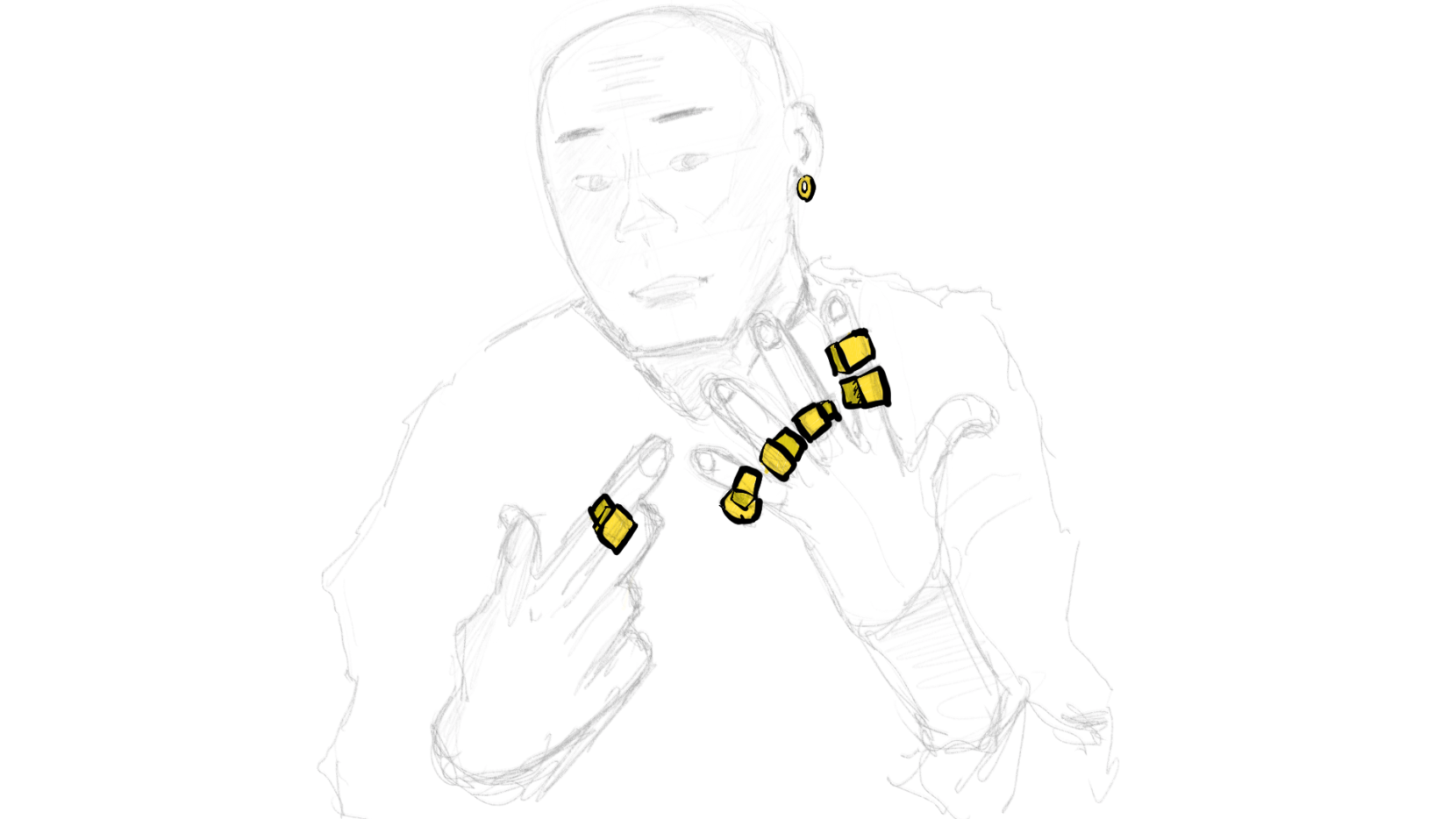
What this completely awful drawing of Michael Jordan represents is expectation. If my goal was to be the Michael Jordan of drawing Michael Jordan, clearly I’d be forever unhappy.
If we change the expectation from being a good Michael Jordan drawing to being a bad drawing of someone else, let’s see what we can do.
We’ll start with Kama, a wrestler whose gimmick was being a shoot fighter. Which is like being his persona with the volume turned to 7.
(Kama found extreme success a few years later with a different gimmick. As a pimp. I don’t know what lesson to pull from that.)

Why Kama? Well, we want to take MJ’s rings and melt them down, like Kama did to the Undertaker’s urn to make them into a chain.

Anyway, let’s melt down some of those rings:
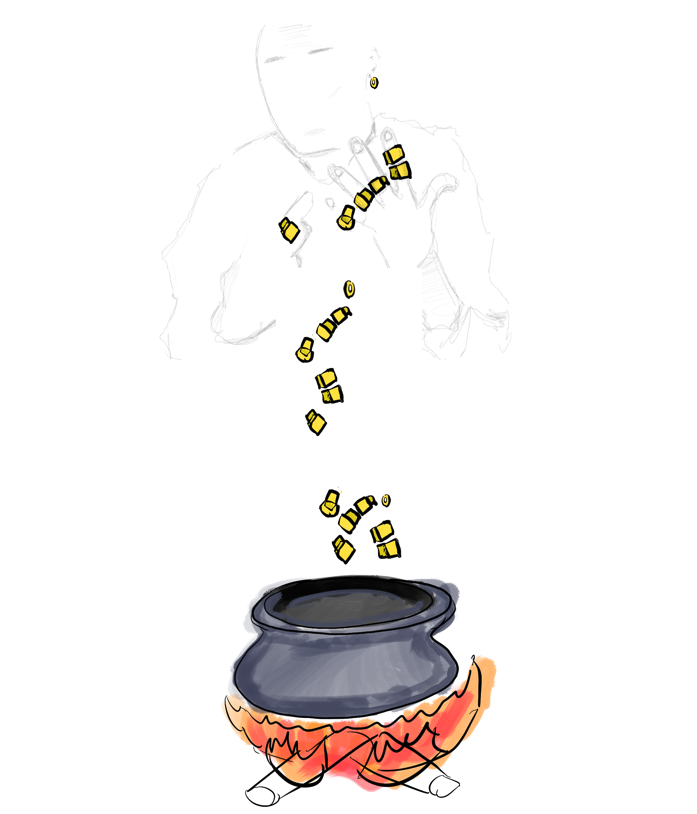
Then throw that chain on.

And that’s how you draw Gucci Mane.
It’s always your fault
Startup success requires some amount of good luck. Though there’s the idea that you make your own luck and prepare yourself for opportunities. On the other hand, it’s important to then also accept there isn’t bad luck. You need to take responsibility for things that go wrong.
DHH says you can’t just stop at attributing things to bad luck. Something caused it. A lack of preparation often looks like back luck. DHH and Ferriss discuss stoic principles and Tim brings up a very important question.
How are you complicit in creating the conditions you say you don’t want?
This really stuck with me and I’m sharing it here partially to remind myself of it in the future.
What I’m coloring
DHH talks about letting kids binge on candy or letting them use an iPad for an entire day. They’ll learn firsthand why it’s not the best idea to overdo things. I’ve been on this iPad for most of the day now and am learning that same lesson.
Here’s a colored version of the bike — see you in a week!
